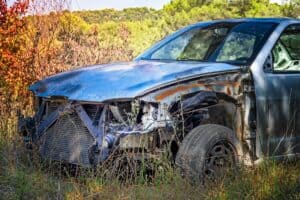
Car crashes surprise you, and other than the shock, there is one unavoidable question always left behind: whose fault was it? That is the key to determining who pays for loss, medical bills, and other damages. As we move towards 2025, drivers ought to know what has changed in the car accident fault laws because they play an important role in how the cases are handled and also what happens in case you get into an accident.
The Fault Basis: Negligence
Generally, fault-based liability for motor accidents in most jurisdictions, such as Kenya, is anchored on the theory of negligence. A driver is negligent only if his conduct (or inaction) is below that of a reasonable driver and leads to an accident. Examples include speeding, texting and driving, running red lights, or driving drunk. The process of the courts is generally to determine one party’s negligence as the proximate cause of the accident and the damages.
Possible Reforms in Comparative Negligence
As individual new 2025 laws in all the states are pending nowhere, one source of shared reform for liability law is “comparative negligence.” The law allows for the scenario that multiple individuals are sometimes liable for some amount of fault in an accident. For instance, Driver A is running a red light, but Driver B was speeding as well; both individuals can be partially at fault.
With comparative systems of negligence, your recovery of damages may be restricted by the percentage of your fault. For instance, if you were 20% to blame, you can recover 80% of your total damages. There are “pure comparative negligence” states, where you would recover for damages even in cases where you were most at fault (such as 90%).
Some adopt “pure comparative negligence,” which allocates recovery based on the proportion of your fault. Others adopt “modified comparative negligence,” which excludes recovery if your fault is more than a specified percentage (e.g., 50% or 51%). Motorists should be aware if their state applies pure or modified comparative negligence, as it can significantly impact potential compensation.
The Role of Technology and Evidence Grooming
The more technology-based cars and use of dashcams
are becoming fault determiners at a fast pace. Technology will make evidence gathering and production even simpler by 2025. Dashcam footage can be evidence beyond denial of accident circumstances and there is little or no scope for argumentation.
The same can be said of information given by car black boxes (event data recorders) that can provide critical data about speed, braking, and steering in the moments leading to a crash. The same technology can further make fault easier to identify, enabling the process to become more mechanical and objective in character, frequently reducing insurance claim and court case lengths.
Greater Focus on Distracted Driving and Vulnerable Road Users
Since nearly everybody owns a smartphone, the phenomenon of distracted driving is still among the leading causes of accidents. Future legislation in 2025 will likely set more severe penalties and a yet more serious focus on prosecuting people involved in distracted driving. This is done through easier faulting of individuals discovered using their mobiles or other distracting driving habits.
There also exists a strong urge to safeguard vulnerable users like cyclists and pedestrians. There is room to have more up-to-date law giving more responsibility of care to drivers in their dealings with these groups, in an effort to have more room for drivers to be held accountable for accidents involving pedestrians or cyclists even where the circumstances are not absolutely certain.
Conclusion
Keeping abreast of these evolving car accident liability regulations of 2025 is important for all motorists. Understanding how fault is determined, how comparative fault operates, how technology comes into play, and how there is more focus on certain types of negligence will render you an informed consumer of road accidents loopholes and will also protect your rights.